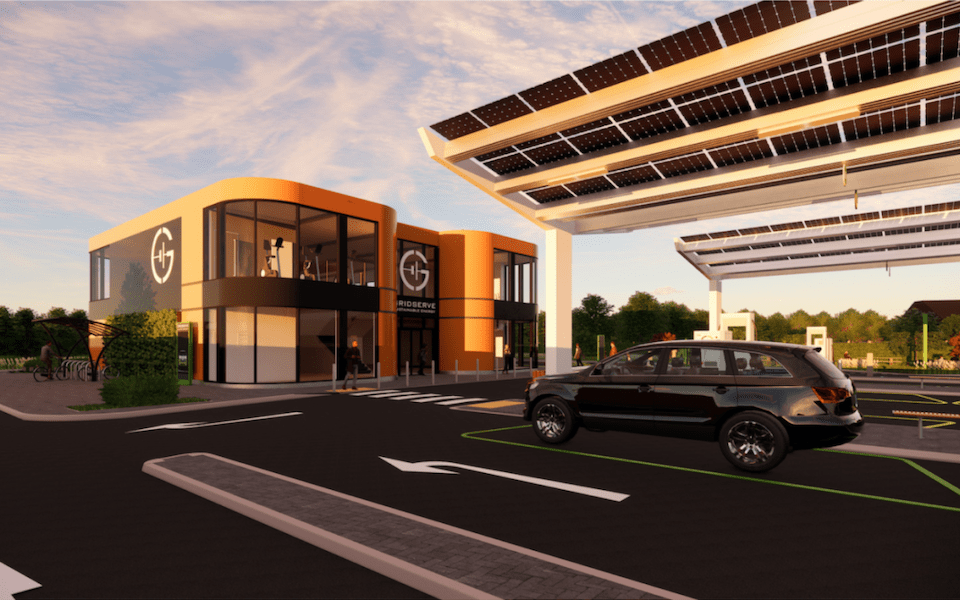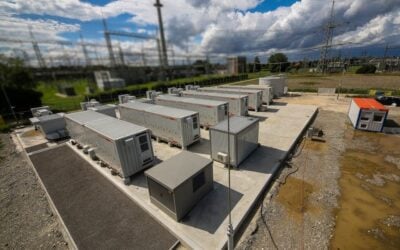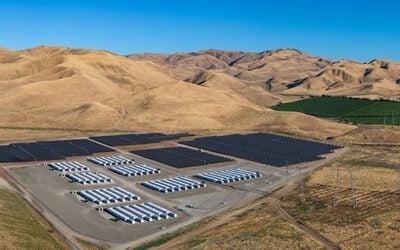
Stationary energy storage in support of electric vehicles (EVs) charging could reach a global installed capacity of 1,900MW by the end of 2029 according to a new Guidehouse Insights report.
The report, ‘Energy Storage for EV Charging,’ explores energy storage for EVs across five global regions, looking into residential, fleet, private, public and mobile charging and providing forecasts through 2029.
Energy storage is increasingly being examined as a solution for deploying electric vehicle charging in areas where the grid is constrained or where a high number of rapid – 50kW or above – chargers are to be deployed. Typically, in these circumstances a costly grid upgrade would be in order, but installing stationary storage for these sites can remove the need for this.
As Guidehouse explains, in order to accelerate growth in EVs, charging networks “must provide faster charging” but it must be done without incurring the costs of infrastructure upgrades or high demand charges.
Try Premium for just $1
- Full premium access for the first month at only $1
- Converts to an annual rate after 30 days unless cancelled
- Cancel anytime during the trial period
Premium Benefits
- Expert industry analysis and interviews
- Digital access to PV Tech Power journal
- Exclusive event discounts
Or get the full Premium subscription right away
Or continue reading this article for free
“A battery storage system can feed from the grid during low demand and release power to charge an EV during peak demand time,” Maria Chavez, research analyst with Guidehouse Insights, said.
Its research found that the total compound annual growth rate across all segments for stationary energy storage for EVs (ESEV) is expected to be 28% by 2029. Regionally, Europe, North America and Asia Pacific are set to maintain a large majority of the total storage capacity, which Guidehouse said was due to the high regional EV installation and charging infrastructure adoption rates.
In the UK, stationary storage is already being deployed alongside EV charging by a number of companies, including Pivot Power, which was acquired by French utility EDF last year.
The EV and storage firm has combined the two technologies at a number of sites, but its most recent is the Oxford Energy Superhub project. This has seen a hybrid 50MW lithium-ion and 2MW vanadium redox flow energy storage system developed by Pivot and Invinity with plans for electric vehicle chargers, including 20 rapids between 50kW and 150kW and 30 fast chargepoints (7kW+).
Pivot Power is not the only one to be deploying this in the UK, however. The likes of Zenobe are also providing storage for EV charging, with the company having launched a scheme last year to support the electrification of buses through offering funding for the installation of electric vehicle chargers and stationary storage at depots where needed.
EV charging supported by storage is also being installed by GRIDSERVE as part of its Electric Forecourts, with the two technologies also combined with solar, a feature the company lauded as allowing it to provide EV charging at competitive prices when the project was first unveiled.
This integration between EV charging, storage and solar was also highlighted by Guidehouse’s Maria Chavez, stating that “energy storage not only aids in peak shaving to make EV charging solutions more cost effective, but also is needed to support integration of renewable energy resources (e.g., solar PV) into EV charging stations”.
The report does, however, also explore the barriers to deploying stationary storage at EV charging sites, with Guidehouse finding that whilst peak shaving and higher charging capabilities remain the two leading drivers for the ESEV market, the current high costs of battery storage and some negative environmental impacts pose challenges to wider market adoption.
It suggested solutions such as second-life battery applications that could bridge the gap to provide more sustainable options in the ESEV market.
Second life battery solutions are being trialled and deployed by a number of companies in several countries, including an energy storage system using Renault batteries in Belgium for multinational materials technology company Umicore.
In the UK, a second life battery storage system is to be provided by Connected Energy for a local authority to help create a low carbon system that would include solar PV and electric vehicle charging.
In mainland Europe meanwhile, the link between stationary energy storage and electric vehicles could provide a considerable deployment opportunity. Corentine Baschet, head of market analysis at consultancy Clean Horizon told Energy-Storage.news earlier this year that EV charging is at present an “even better opportunity than PV-plus-storage to beat the price of electricity from the grid”.
“EV charging is a good opportunity – a grid upgrade might require you to wait a couple of years and if you need to install an EV charger you might get a battery because the grid is not fast enough, that’s just one reason, plus the price of building out the grid,” Baschet said, although he added that while “in terms of deployment it’s a good thing for storage,” in the future, EVs may also be competition for energy storage, being as they are, batteries on wheels.
Meanwhile, technology providers such as Schneider Electric in the US are already proactively pursuing the opportunity to sell microgrid solutions into the electric vehicle charging space, the company’s senior vice-president and chief technology officer for the microgrid division, Andy Haun, said in an interview earlier this year.





